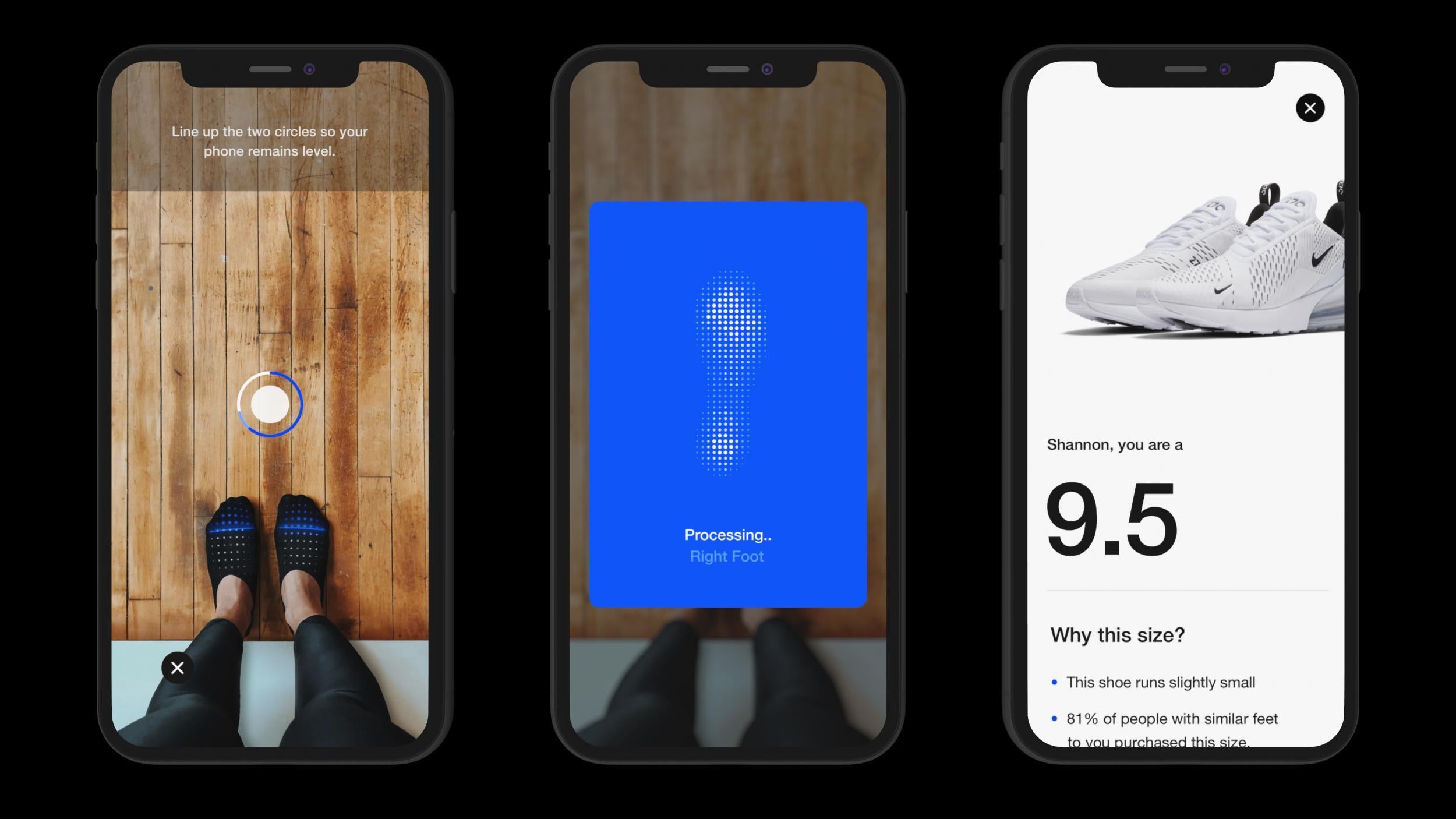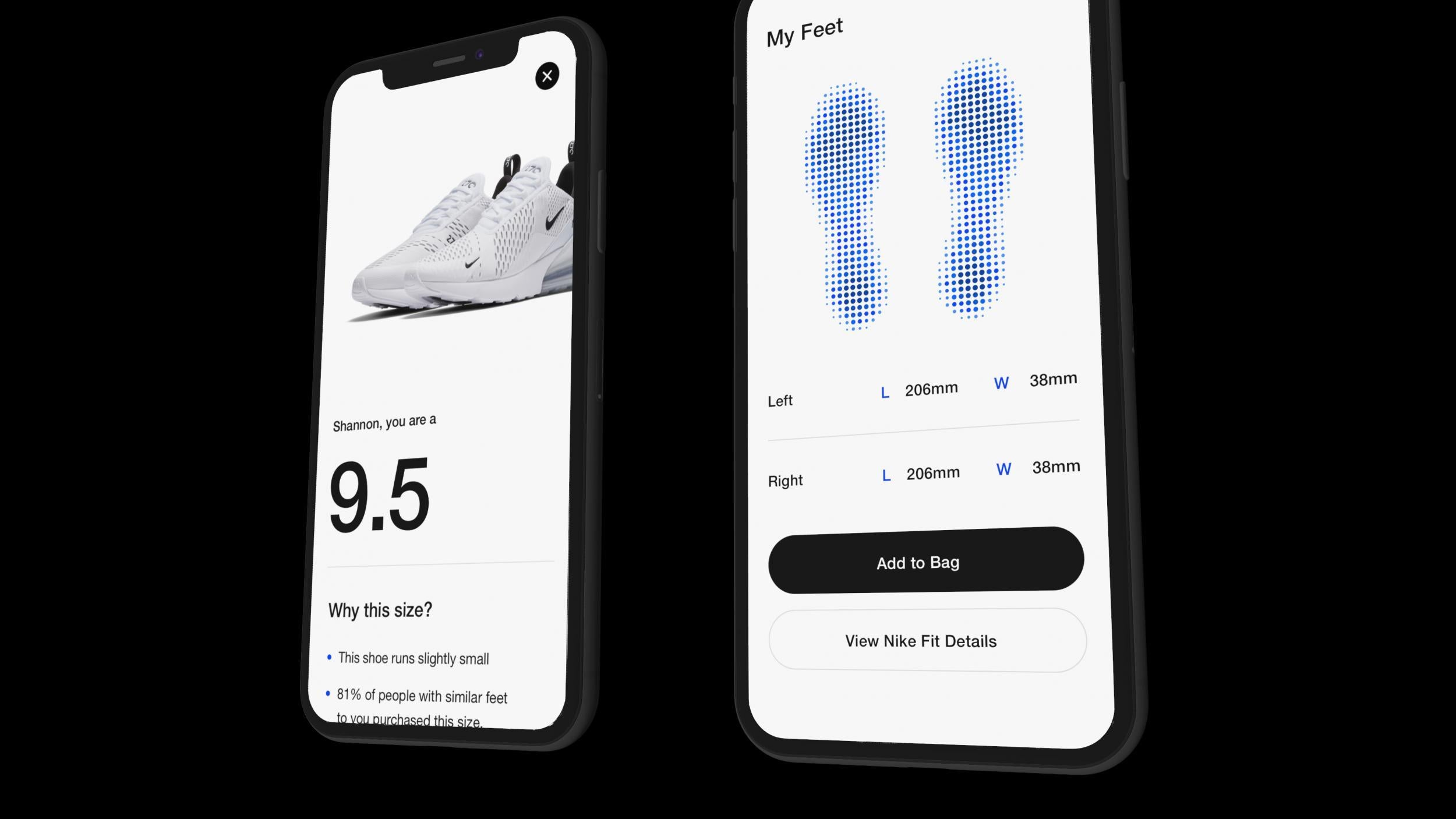Nike Fit: Company claims to have fixed the biggest problem with shoes as it reveals entirely new way of sizing your feet
'Size is a lie'
Your support helps us to tell the story
From reproductive rights to climate change to Big Tech, The Independent is on the ground when the story is developing. Whether it's investigating the financials of Elon Musk's pro-Trump PAC or producing our latest documentary, 'The A Word', which shines a light on the American women fighting for reproductive rights, we know how important it is to parse out the facts from the messaging.
At such a critical moment in US history, we need reporters on the ground. Your donation allows us to keep sending journalists to speak to both sides of the story.
The Independent is trusted by Americans across the entire political spectrum. And unlike many other quality news outlets, we choose not to lock Americans out of our reporting and analysis with paywalls. We believe quality journalism should be available to everyone, paid for by those who can afford it.
Your support makes all the difference.Your shoes probably don't fit; three out of five people, Nike says, are wandering around wearing the wrong size. It is, the company says, the biggest problem with wearing shoes, and bad fit leads to uncomfortable sneakers, worse performance, and people returning shoes or just simply not deciding to buy new ones. And now Nike says, that widespread problem – attested to by unworn shoes found around people's houses, and blisters and blood on people's feet – is fixed.
It says it has done so with the invention of a new app that will encourage people not to pick shoes by selecting a number, but instead scanning their feet. By using a phone's camera, the new app will gather a full picture of the size of your foot – and then use that to decide which shoe to send you.
Eventually, Nike thinks we might be able to do away with sizes entirely, with shoes instead turning up at your door without a number or gender written on them, and instead with just your name. But for now, the company wants to change how you get to that size.
While shoes have changed in a variety of unrecognisable ways, the fundamental way that they're fitted to your feet hasn't altered much since the 14th century. Back then, cobblers would grab hold of a piece of equipment called a last, built to represent a foot, and sew up the material to make the shoe around it so that it would fit to people's feet.
Those shoes eventually formed into a standard size, which remains in place as the numbers used across the world today. That all happened so long ago that they are based on the dimensions of a kernel of barleycorn.
Both of those processes remain in place now. The sewing might be done by machines and the lasts might be made out of the latest materials, but the way they are fitted around the feet and the numbers used to describe that fit is unchanged.
It is a process prone to error: most people are in the wrong sized shoes. More than a quarter of shoes come back to stores because they don't fit, and Nike thinks that the number is actually probably even higher when it accounts for the people who simply go on wearing badly fitted sneakers, or don't ever wear them at all.
That leads to a whole variety of problems. Rubbing, blisters and blood will all be familiar to just about anyone who has ever worn shoes; for athletes, it can mean not just pain but poor performance, since shoes are built to fit precisely onto the foot.
Nike founder Bill Bowerman, for instance, was famous for ripping apart standard shoes and resewing them to fit around the feet of the athletes he was training. Shoe companies have been trying to do the same on a broader level ever since, though the problem has stayed largely the same.
The technology currently used to try and fix that problem is decades old in itself. In Nike stores around the world – and just about every other shoe shop – the piece of machinery known as a Brannock Device tries to assess people's feet by pushing sliders around to measure them at their widest and their longest, but that in itself can lead to badly fitting shoes.
Nike thinks that has been fixed by the new technology known as Fit. It uses a phone's camera to scan the feet, combines that with augmented reality technology to understand just how big they are, and then feeds that into its vast array of data about the shoes that it makes.
It thinks that technology is not simply going to make shoes fit better, by taking into account the precise dimensions of the foot and the lacing, fit, stitching and materials of the shoe. It thinks it could fundamentally alter the way people buy shoes, and make the traditional barleycorn-based measurements out of date.
Size is a lie, Nike says. And it claims its new app is ready to tell you the truth.
The new feature will appear initially inside of the Nike app, as well as in a slightly different experience in stores. But both rely on the same basic principles, if they are presented in different ways.
When it launches, anyone heading into the app to buy shoes will be presented with the normal list of sizes when they do. But they'll also be told about Nike Fit, alongside a button offering them the option to try it.
Pressing that will open up the camera and a whole host of instructions. They'll be told to allow the phone to scan their floor so it can get a sense of proportion. After that they'll stand next to the wall and simply point the shoe at their foot.

At that point, the phone starts doing its work. It uses computer vision to scan the foot – using only the camera of the camera and the capabilities of the app – and then combines that with data science to scan the foot and read what it says are "dozens" of different datapoints about the size of your feet.
Once it has those measurements, offering a precise picture of your "foot morphology", it is fed into a machine learning model that is learning how feet are sized over time. By combining that information about your feet with all of Nike's information about its shoes, it can compare the two and decide what shoe size you actually need.

That measurement might vary with the shoes; it might even be different for alternative versions of the shoe, because of the way the materials work. (This writer's feet were generally a size above what had been expected, and had a range of a range of three different sizes for different shoes.) The measurement might even vary between your feet, with one slightly larger than the other, and in the future it could be possible to have differently sized individual shoes to match.
Getting this wrong could be very bad indeed. A huge number of people already suffer with wrongly sized shoes – and if the app got them even more wrong, then it could simply exacerbate the problem it was created to fix.
Nike says it is confident it will work because it has been testing it in "stealth" mode for months. Some select Nike Stores have quietly swapped out the traditional Brannock Devices for the app, allowing the company to gather feedback and look at how the measurements match up.
"We've had true measurable results that's inspiring confidence," says Adam Sussman, Nike's vice president and general manager for Nike Direct Digital and Geographies. "That's why we also feel really comfortable going out with this so broadly so quickly because the results are pretty astonishing especially when you compare it to the results that you get with with a Brannock device."
It will keep collecting that data as the app goes into use, rapidly collecting unprecedented amounts of data about the size of people's feet. (Nike says it takes the responsibility of storing that data "extremely seriously", and that people will be able to remove it from their account if they desire.) It says that data will be fed back throughout the company, a process that could lead to new shoe designs or sizes.
At the moment, the primary reason not to innovate further and faster is a concern for consumers. People have lived with the traditional shoe sizing system for centuries – and it wil be a tough thing to change with a click of a camera and an app update.
"There is a consumer journey, and you have to bring the consumers along with you," says Sussman. "But you can see it as completely redefining how you purchase the right product for you."
Nike is aware that this could all be a little stressful. One way of trying to alleviate that is that the app actually slows down the process of scanning your feet and shows a readout that is strictly unnecessary, just so that people can see it is doing something. That was part of a commitment to ensuring that the app was simple and non-intimidating no matter how complicated the underlying technology was, says Nike's Josh Moore, who led the design of the app.
It's not the first time that Nike has introduced such new features into its app, or those based on augmented reality, which is used heavily in its SNEAKRS app. The company used lessons learned from the introduction of those feautres to inform the new release, Moore said.
In the future, with even more work and more feedback, that could develop into new ways of understanding shoe size – or giving it up completely.
"I think there's some things that we have clear line of path or visibility to," says Sussman. "And then there's some things that we don't even know where this could take us."
That future could include shoes that are in some way post-size: not based on gender or barleycorns, but just chosen by a computer to fit as snugly as required around your feet. Nike has already experimented with abandoning size – it offered its Presto shoes in small, medium and large, which was neat but didn'twork for more performance-focused shoes – and this new feature could be the leap forward required to take the numbers of boxes and replace them instead with your name.
"I believe that there's a way a view into the into the future that's not so distant from a technological standpoint that we can get there," says Sussman. "We're just going to say: this is the right shoe for you."

Join our commenting forum
Join thought-provoking conversations, follow other Independent readers and see their replies
Comments